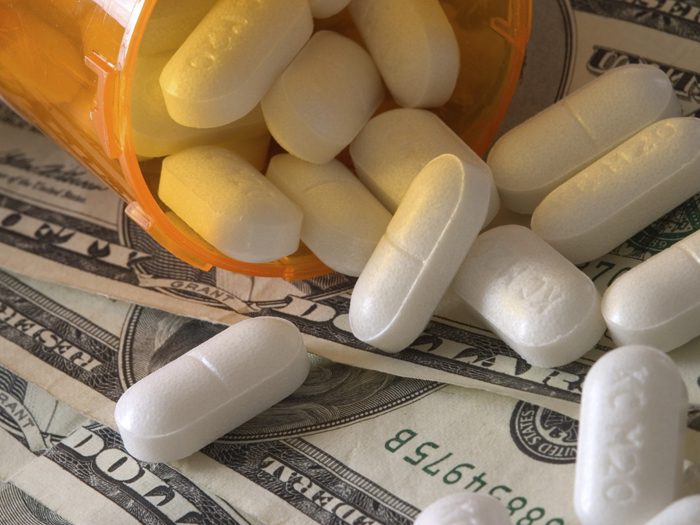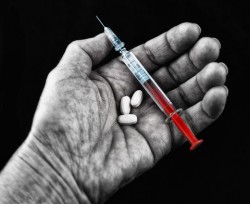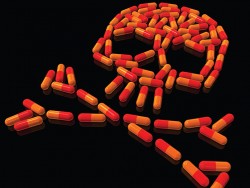Pharmceutical Industry
6 Critical Risks Facing the Pharmaceutical Industry

The pharmaceutical industry is under scrutiny from the government, health insurers and consumers, all calling for greater transparency and accountability. It’s also facing competition from both internal and external forces.
1) Increased Competition from Generic Drugs
In 2017, the FDA began a push to get lower-cost generic drugs out to market faster.
Once a new brand name drug is approved, it’s granted a 180-day period of exclusivity, during which time generic versions cannot go to market. But, a backlog of generic applications has stretched that 180 days much longer. The FDA’s renewed effort to clear that backlog and get generic applications through the approval process faster will flood the market with cheaper versions of high-cost drugs.
According to the FDA, the entree of two competitive generic versions knocks down the price of a brand name drug by 52 percent. The price falls another 30 percent once nine generics are on the market.
2) Legal Liability for Opioid Addiction

Opioid manufacturers are under fire for feeding the epidemic sweeping the nation. Hundreds of lawsuits filed from the local to the federal level accuse drug makers of misleading the public about the addictive properties of opioid painkillers. The suits additionally allege that drug makers exaggerating their benefits and urged doctors to over-prescribe for the sake of increasing revenue.
Now the Department of Justice is getting involved.
Attorney General Jeff Sessions announced the creation of a task force to investigate manufacturers and distributors of prescription opioids. He also said the Department will provide assistance to the prosecution of lawsuits against the drug makers where it can.
3) Product Liability
Beyond promoting competition from generic drugs, the FDA is also urging pharmaceutical companies to cut down the cost of new drugs by streamlining and speeding up the research and development process, which should eliminate some overheard expenses.
While this makes drugs more affordable for consumers, it also means medications spend less time in testing, increasing patient safety risk and regulatory risk.
Policy makers will weigh access to medicines with the desire to encourage biopharmaceutical R&D, which relies on regulatory efforts to streamline clinical research, ensure product quality, and achieve more efficient oversight.
4) Keeping Up with Technology
The study of human genomics is paving the way for personalized medicine, in which drugs are built to work with an individual’s unique set of genes, increasing their effectiveness and safety. 3D printers could emerge as top competitors for manufacturers; the first printed drug was approved by the FDA in 2015. The explosion of personal data collected by wearable devices could enhance the quality of clinical studies and help researchers synthesize results more efficiently.
Nanotechnology could take data collection a step further than wristwatches. Clothing made from nanoparticles could detect more health parameters like internal body temperature, sweat rate, blood pressure, hydration status and more. Medication delivered directly to the cells via nanoparticles in the bloodstream could also revolutionize the way medications are designed.
Failure to keep up with these technology advancements could open the door for non-traditional players to enter the market and infringe on pharmaceutical companies’ market share.
5) Counterfeit Drugs and Global Quality Control
The flow of foreign counterfeit drugs into the American market continues to be a problem, especially as manufacturers move operations overseas.
Multinational pharma companies have to ensure they meet U.S. quality standards while adhering to all local regulations abroad, and are also responsible for blocking for illegal trafficking of counterfeit medications.
This requires stringent standards for all vendors and third parties involved in the manufacture and transportation processes. Brexit will make this more difficult for companies operating out of or distributing drugs in the UK.
6) Patent Cliffs
A patent cliff refers to the expiration of drug patents and the sudden drop-off of sales of products that previously constituted a large percentage of the market. Essentially, patent cliffs put these dollars up for grabs for competitors to produce and patent a comparable brand name drug
In 2022, the industry is expected to have almost $50 billion in prescription drug sales worldwide at risk due to patent expiration, according to market research firm Statista. &










